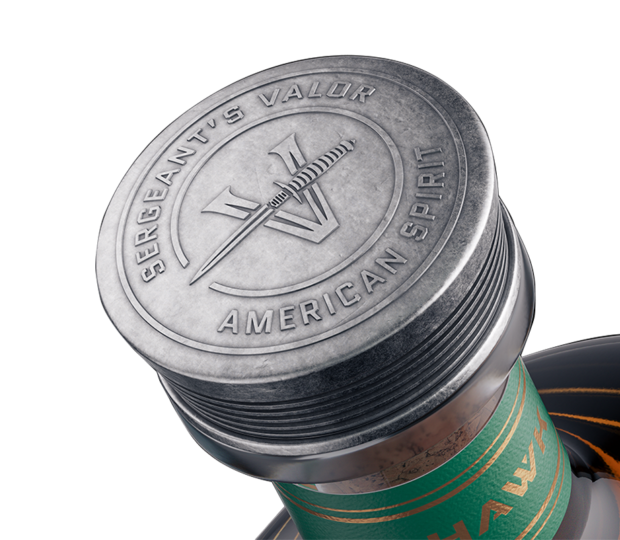Capitalizing your dreams

Written by David
October 08, 2019
Exploring the challenges of raising capital for your distillery
So you have a great idea for a brand. You have spent the necessary time and resources in vetting the opportunity and how your idea will fit into the craft landscape. You have modeled out solid pro forma financials, and even have a designed comp bottle and started your liquid development. Now what?
It’s time to launch into one of the toughest phases in the alcoholic beverage sector—raising capital. While there are dozens of structures and avenues open to you for attaining capital, most fall into the two primary buckets of debt or equity (sometimes a hybrid between the two).
Let’s start with the largest source of capital—an equity capital raise—and some of the surrounding issues. There are numerous strategies in terms of sources: angel investors, crowdfunding, accelerators, incubators and professional firms like venture capitalists and other funds. Before you go out to any professionals, it is best to start going through your Rolodex and putting your feelers out to the market. Presuming this is your first round of capital, it is best to approach the Four Fs: Friends, Family, Fools, and Fanatics. Other ideal initial investors include those who have some direct knowledge of the alcoholic beverage industry or broader food industry such as brewers and other manufacturers, as well as service providers that work with those types of businesses, such as CPAs and legal counsel. Successful self-made entrepreneurs are also ideal investors as they often find the spirits industry very appealing because of the margins, the sexiness of spirits, and the very large typical exit multiples.
Some inherent challenges of raising equity for a spirits brand often center around the uniqueness of this business. The three-tier system is not one most investors have come across, so there is a significant education component to them truly understanding the nature of this business. It is crucial to give them a succinct view of the craft landscape. Educate them about how cash flows work for brands and distilleries. Demonstrate the large exit multiples with data, where available, and clearly articulate your primary points of differentiation in order to answer the big question: Why will people buy your brand? Remember, most investors haven’t previously invested in this sector privately. Explain the craft spirits M&A landscape:
- Large exit multiples ranging from 6-9-times revenue
- Higher barriers to entry, both from knowledge and capital
- Vast spirits world in terms of retail dollars spent yearly
- Non-correlation to most other industries (of which you give up by making a public versus private investment where capital markets increase exposure to systemic risks)
- Recession resistance. In downturns, there are reallocations towards more value-oriented brands and a consumer shift toward in-home entertainment, but overall consumption has followed an up-trend
That said, the most successful investors will be investing first and foremost in you and your team and your abilities to execute a plan. Seasoned investors understand the Pareto principle, or the 80-20 rule, which in simple terms shows us that there are uneven distributions both in business and the natural world around us. Economist Vilfredo Pareto noticed that 20% of the people owned 80% of the land in Italy, a pattern that can be found everywhere that a few (companies, brands, people, investments) radically outperform all others. These investors don’t seek diversification; first, they seek the 20%, the companies that can become overwhelmingly valuable. This is a great business as a backdrop to large increases in value, and now it’s up to you to sell the intangibles—yourself.
Next, let’s touch briefly on debt. Debt, of course, is a legal obligation to another entity to be paid back in the future. Bank loans, government-guaranteed loans, credit cards, lines of credit, home equity lines of credit, leasing contracts and portfolio loan accounts are all debt structures. One advantage of debt is, most importantly, that you don’t give up ownership in your brand. Of course, that comes at a cost, but in most instances, interest rates are less than what many investors would require as a rate of return. Disadvantages include having to personally guarantee (with personal assets) the loan, very little flexibility, and the monthly payments can become onerous if in a cash crunch or lousy year.
One debt structure we have seen much more recently due to the explosion of the craft sector is the SBA 7(a) and the SBA 504 loans. For years banks hesitated on lending to the craft sector in general but have come around to a large number of entrants, good cash flows and margins, and success stories of exits. The SBA 7(a) can be used for equipment and build-out of a distillery, but usually is used more for working capital. These multi-purpose loans typically come with higher interest rates, personal guarantees, and are highly collateralized.
Given that the most significant cash outlays in the craft business is facility build-out and equipment, the SBA 504 has become an attractive program to new entrants. They have lower down payments, lower interest rates (currently) and higher loan amounts. This loan consists of three parts. First, there is a bank loan depending on your banking institution or suggestion by the SBA of approximately 50% of the loan. Second, an SBA loan from an SBA- certified development company makes up about 30-35% of the loan. Finally, there is the down payment, your capital put up to secure the loan of about 10-15% of the total.
While interest rates are highly dependent on various factors, the 504 program is in the ballpark of 5-6%, whereas the 7(a) is higher at the 8-9% range in many cases.
No matter which route you take for sourcing capital, remember that investors and banks put money in people more than products. Given the inherent attributes of the craft sector, it’s a great area in which to be raising money. Now it’s up to you to sell your specific idea and self.
While challenging, it’s a good time to be securing capital from either equity or debt. Focus on your plan, get creative and don’t forget to reach out for help along the way. Make sure that you have adequately vetted the opportunity and that an investor or bank can trust that you are prepared. Go get ‘em!
Article by Thoroughbred’s David Large, originally featured in American Craft Spirits Magazine, October 2019



